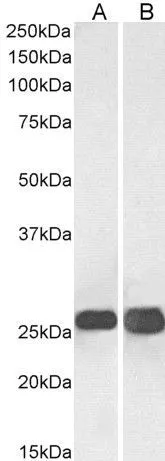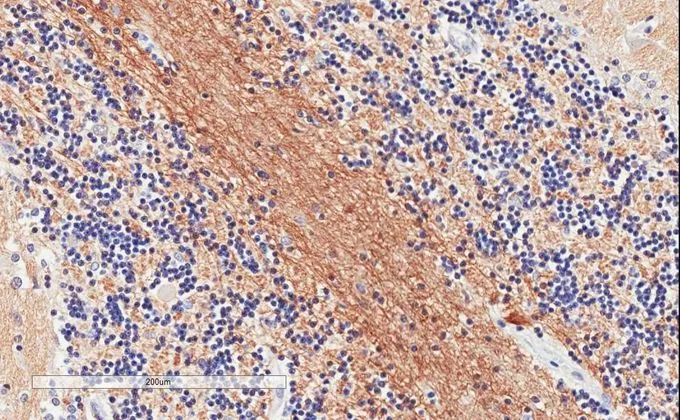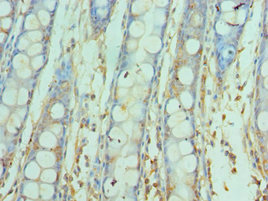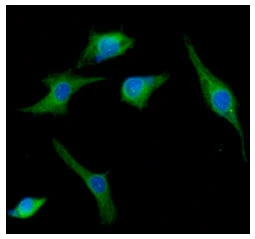
WB analysis of human brain (cerebellum) (A) and mouse brain (B lysates using GTX89577 SNAP25 antibody, C-term. Dilution : 0.03microg/ml Loading : 35microg protein in RIPA buffer
SNAP25 antibody, C-term
GTX89577
ApplicationsWestern Blot, ImmunoHistoChemistry, ImmunoHistoChemistry Paraffin
Product group Antibodies
TargetSNAP25
Overview
- SupplierGeneTex
- Product NameSNAP25 antibody, C-term
- Delivery Days Customer7
- Application Supplier NoteWB: 0.01-0.03microg/ml. IHC-P: 1-2microg/ml. *Optimal dilutions/concentrations should be determined by the researcher.Not tested in other applications.
- ApplicationsWestern Blot, ImmunoHistoChemistry, ImmunoHistoChemistry Paraffin
- CertificationResearch Use Only
- ClonalityPolyclonal
- Concentration0.50 mg/ml
- ConjugateUnconjugated
- Gene ID6616
- Target nameSNAP25
- Target descriptionsynaptosome associated protein 25
- Target synonymsCMS18, DEE117, RIC-4, RIC4, SEC9, SNAP, SNAP-25, SUP, bA416N4.2, dJ1068F16.2, synaptosomal-associated protein 25, resistance to inhibitors of cholinesterase 4 homolog, synaptosomal-associated protein, 25kDa, synaptosome associated protein 25kDa
- HostGoat
- IsotypeIgG
- Protein IDP60880
- Protein NameSynaptosomal-associated protein 25
- Scientific DescriptionSynaptic vesicle membrane docking and fusion is mediated by SNAREs (soluble N-ethylmaleimide-sensitive factor attachment protein receptors) located on the vesicle membrane (v-SNAREs) and the target membrane (t-SNAREs). The assembled v-SNARE/t-SNARE complex consists of a bundle of four helices, one of which is supplied by v-SNARE and the other three by t-SNARE. For t-SNAREs on the plasma membrane, the protein syntaxin supplies one helix and the protein encoded by this gene contributes the other two. Therefore, this gene product is a presynaptic plasma membrane protein involved in the regulation of neurotransmitter release. Two alternative transcript variants encoding different protein isoforms have been described for this gene. [provided by RefSeq, Jul 2008]
- Storage Instruction-20°C or -80°C,2°C to 8°C
- UNSPSC12352203
References
- Function, Innervation, and Neurotransmitter Signaling in Mice Lacking Type-II Taste Cells. Larson ED et al., 2020 Jan/Feb, eNeuroRead more
- Physiological and Behavioral Responses to Optogenetic Stimulation of PKD2L1+ Type III Taste Cells. Wilson CE et al., 2019 Mar/Apr, eNeuroRead more
- Type III Cells in Anterior Taste Fields Are More Immunohistochemically Diverse Than Those of Posterior Taste Fields in Mice. Wilson CE et al., 2017 Oct 31, Chem SensesRead more





